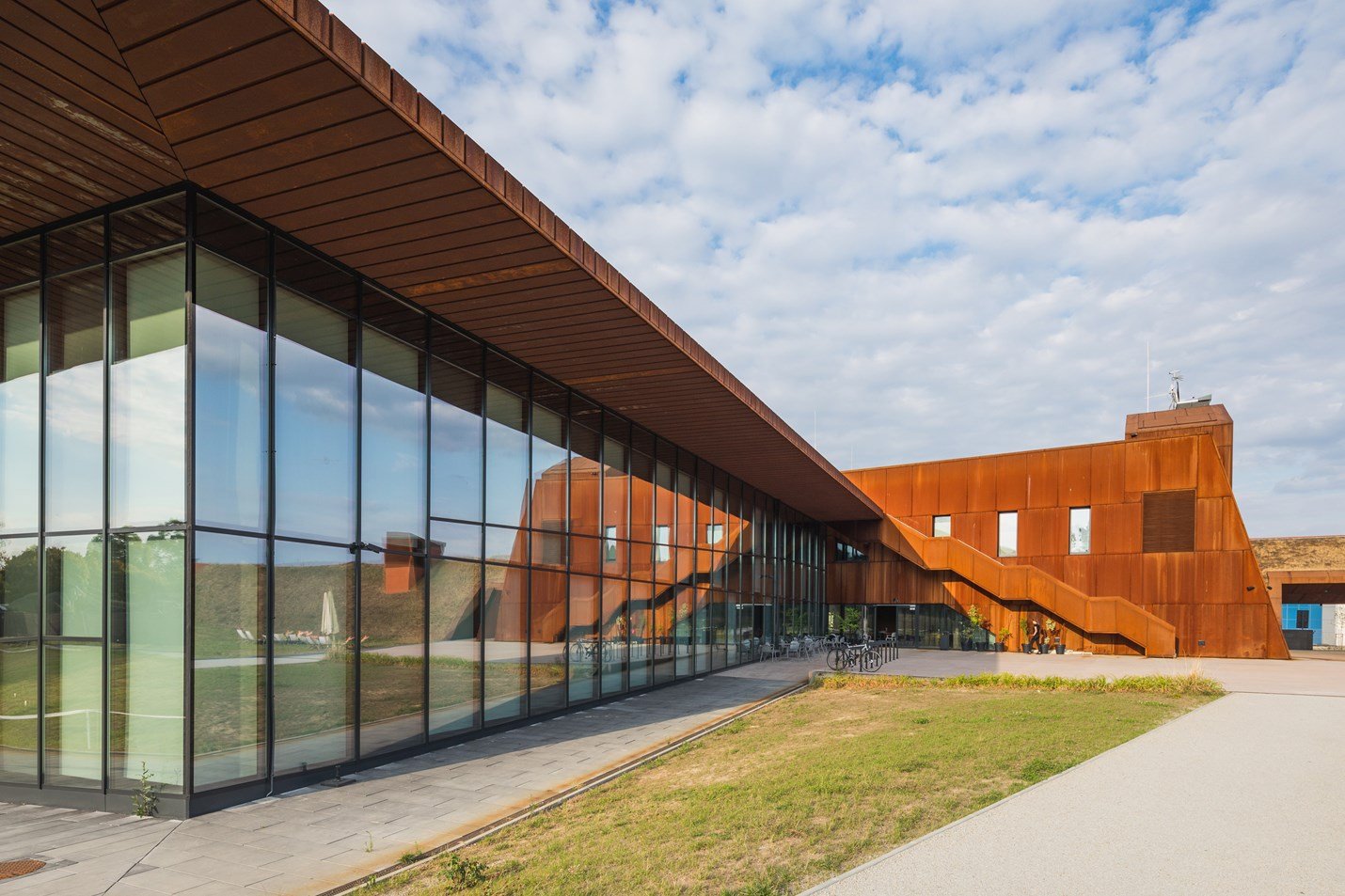
KS Cracovia 1906 Centennial Hall and Sports Center for the Disabled
The most accessible sports arena in Poland
To celebrate the 100th anniversary of Poland’s oldest active sports club, The Cracovia Sports Club, the Cenntenial Hall hall was built and completed in May 2018. It is located in the centre of Cracow with the city’s historic core just around the corner. Its architecture has distinct features and a unique design in order for the building to blend in with the existing landscape.
The Cenntenial Hall is one of the most accessible sports facilities in Poland as it is harmonized with the Disabled Sports Centre, which was already on the grounds at the start of the anniversary building’s construction.


The building
This two-storey facility covers more than 5 000 m2, but the floor area used for activities is about 3 700 m2. It is fully adapted to the needs of disabled and is the base for Polish Paralympics athletes who are preparing for coming events. The hall features stands for close to 800 spectators, including about 50 wheelchair spots, and the main arena may be used for most indoor sports disciplines. Finally, the building has a flat roof covered with greenery, accessed by a driveway with a designed ramp which allows everyone to enjoy the sights of Cracow from the roof top.
Similar to many sports facilities, if not all, the Cracovia hall has great fluctuations in cooling demand. This partly because of seasonal outdoor variations but primarily because of changing occupancy and activity levels inside the arena. Our two guides below offers more information about the challenges in sports facilities, and how to ventilate to the exact need at the right time with demand controlled ventilation.
Our guide about sports facilities
Read more about demand controlled ventilationClear sound requirements
The influence of sound on the indoor climate is highly individual. Some people appreciate sound in the background, like music or the murmuring of other people, while some crave complete silence. Some hear the music from a loudspeaker as unpleasant noise, while others enjoy it as beautiful tones of a melody.
There are usually sound requirements for building projects. In this case, the sound power levels of the dry coolers should not exceed 70 dBA at night, and 80 dBA during the day.

Our Swegon solution
From Swegon we provided a BlueBox TETRIS water-cooled modular chiller with a hydraulic module and variable flow rate. To meet the acustics requirements stated above, its configuration was of LN type, low noise. Further, we provided a BlueBox TETRIS dry-cooler unit, also in low noise configuration.
The advantage of this solution is the ability of handling varied flows which makes it possible to meet the changing heat loads. This further allows maximum energy savings while still maintaining stable pressure and temperature in the system.
Optimisation for increased energy efficiency
A Flowzer optimisation system was also provided to the Cracovia hall due to the large fluctuations in cooling demand in the building. The system can support one or more units and automatically adjust the pump speed to maintain previously mentioned stability in pressure and temperature.
The Flozer system may even shut down the coolers as the pressure drop in the hydraulic circuit changes with changes in load requirements. Again, this generates energy savings.
Blog: Why are we moving more water than necessary?


